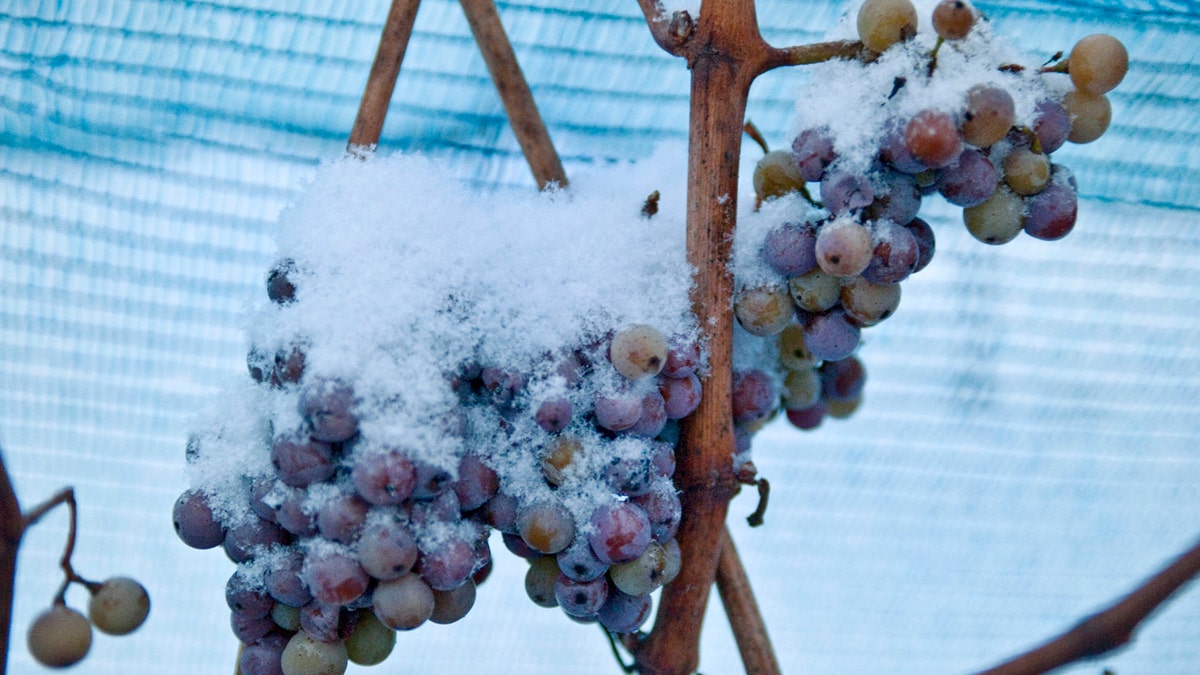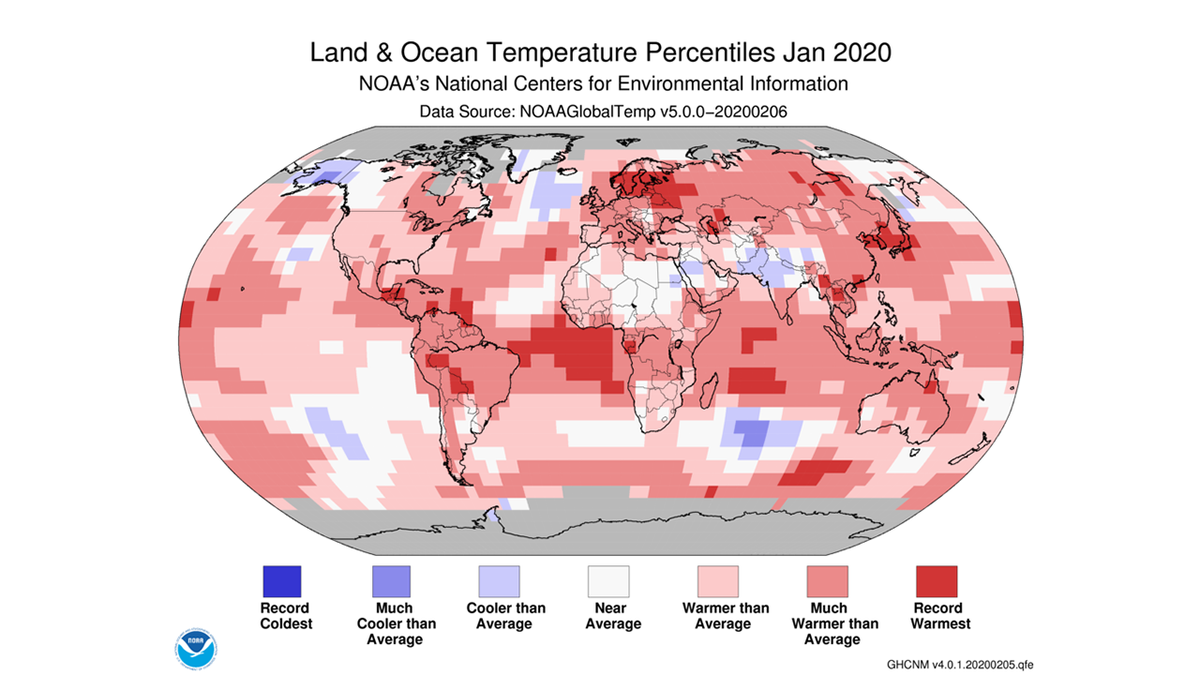Fox News Flash top headlines for March 2
Fox News Flash top headlines are here. Check out what's clicking on Foxnews.com.
Warmer temperatures this winter have apparently stymied production of a special wine in Germany for the first time in recorded history.
The German Wine Institute said Sunday that none of the country's 13 wine-growing regions had the necessary temperatures of 19 degrees Fahrenheit in 2019 to produce ice wine.
"The 2019 vintage will go down in history here in Germany as the first year in which the ice harvest has failed nationwide," the DWI said in a statement.
NEW YORK HOMES COVERED IN ICE, RESEMBLE 'FROZEN' AFTER STORM BRINGS STRONG WINDS, LAKE-EFFECT SNOW
A succession of warm winters has cut into ice wine production recently, the institute said, noting that in 2017 only seven producers managed to make the pricey, golden nectar made from grapes that have been left to freeze on the vine. Only five managed it in 2013.

In this Dec. 18, 2009 file photo snow covered grapes hang in a vineyard near Freyburg, Germany. (AP Photo/Eckehard Schulz)
“If warm winters become more frequent over the coming years, ice wines from Germany's regions will soon become an even more expensive rarity than they already are,” wine institute spokesman Ernst Büscher said in a statement.
The National Oceanic and Atmospheric Administration said last month that January 2020 was the hottest January on record

A man from NOAA's National Centers for Environmental Information showing the scope of warmer-than-average temperatures across the globe in January 2020. (NOAA)
"Lots of regional heat to go around," NOAA noted in its report, adding that no land or ocean areas experienced record-cold temperatures in January.
Buescher said the institute knew of no vintage year in this century or last when no ice wine was made, and since winters were colder in the 19th century, it assumed that the latest harvest was the first one to create no ice wine since production began in 1830.
Freezing the grapes before they are crushed concentrates the sugar and leads to an intensely sweet, golden wine often served with dessert. It has always been a niche product with around 0.1 percent of German production and expensive due to low volumes.
STORMS CAUSE MASSIVE HOLE TO OPEN UP IN BRIDGE AT NATIONAL PARK IN THE UK
"Another problem for ice wine production is that in recent years the dates for a possible ice harvest have shifted more and more into January and February, while the grapes tend to ripen earlier and earlier," according to the institute. "As a result, the period that the grapes have to survive in a healthy state until a possible ice wine harvest is becoming longer."
The production of the wind is just as tricky as the weather conditions.
Workers must race into the vineyards to bring the grapes in with only a few hours notice when the temperature falls, often at night or in the early morning. Since the grapes must be pressed while still frozen, makers labor in unheated facilities. Vineyard owners also face the risk that grapes set aside for ice wine will rot on the vine before the hard freeze comes.
CLICK HERE FOR MORE WEATHER COVERAGE FROM FOX NEWS
Canada's Niagara Peninsula is one of several other places where ice wine is produced, thanks to its cold winters, according to the Associated Press. It's also made in northern Michigan, Vermont and Ashtabula County, Ohio, near Lake Erie.
Major markets for German ice wine include Japan and China as well as Scandinavia and the U.S., the institute said.
The Associated Press contributed to this report.


